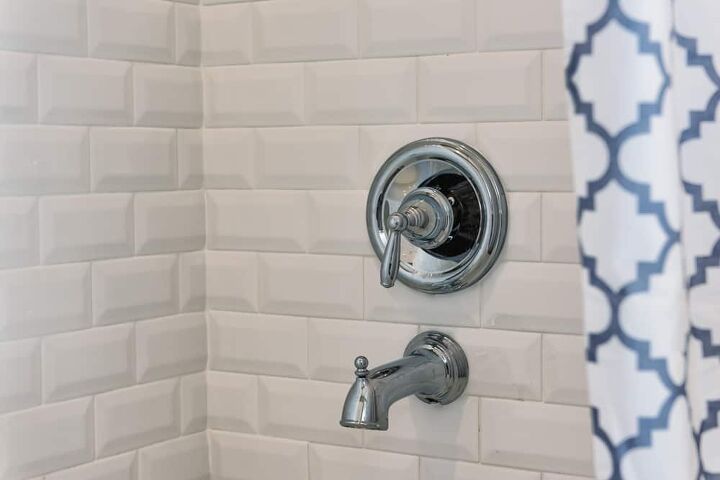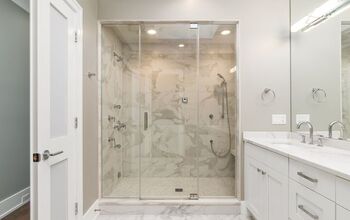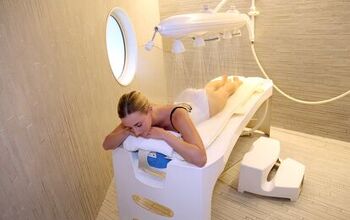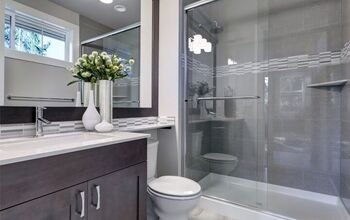What Is The Standard Shower Valve Height? (Find Out Now!)

The height of your shower valve has less to do with comfort and more to do with your shower’s plumbing setup. Shower valves are not universal, and it can be difficult to figure out the ideal height for your shower. So, what is the standard shower valve height?
The standard shower valve height for a shower stall is 48” from the ground. Showers set in a bathtub require a shower valve that is 28” from the ground because it needs to connect to the tub spout tap. Shower valves are not generally interchangeable between tubs and shower stalls, but you have more options with an adjustable shower valve.
You can choose the right shower valve and install it properly if you take accurate measurements. Shower valves are easy to install once you determine the ideal height for your shower configuration. Follow along as we explore the factors that affect shower valve height.
Do You Need a Faucet, Fixture, or Pipe Repair or Replacement?
Get free, zero-commitment quotes from pro contractors near you.

Why It Matters
Ideally, everyone in your home will be able to fit comfortably beneath the showerhead when they take a shower. Likewise, the valve should be at an accessible-height that is accessible, yet not too close to the tub or shower itself.
Of course, the former is a bit more arbitrary and there is an acceptable range for shower head height. Industry standards are as such because they have worked for a long time. For those who are either quite tall or short, heights may change accordingly.
Shower Valve Height
The ideal shower height varies based on whether the shower is in a shower stall or bathtub. For example, you need to place your shower valve 48” off of the ground if you have a shower stall. The ideal shower valve height for a shower in a bathtub is 28”.
You don’t need a low shower valve on showers with a bathtub because you don’t need to connect to the tub tap. Shower-tub combos have a tap to fill the tub as well as to supply water to the showerhead. Generally, the shower valve is less than 3 feet from the ground if you have a bathtub because you need the extra pipe connection for the tub tap.
Shower valves are not interchangeable, but they are designed to be reachable whether you sit or stand. You can find lower shower valves for shower stalls designed to be easier to reach from a seated position. Adjustable height shower valves allow you to set the valve from the most convenient distance to the ground.
Showerhead Height
The standard height for a showerhead is 72” from the ground because that height can generally accommodate anyone. You can install a showerhead higher than that as long as your shower stall and plumbing can support it. It is ideal to install your showerhead 80” from the shower pan for comfort, drainage, and easy installation.
Rainfall showerheads are unique and you can comfortably install them up to 84” from the shower pan. At that height, you can comfortably fit tall homeowners without negatively affecting others or the pipe connections. The height of your bathtub, shower stall, shower pan, and ceiling can ultimately determine how high you can install your showerhead.
You can install a showerhead anywhere between 70” and 84” from the shower pan as long as your shower and plumbing support it.
Distance Between Fittings
Knowing what our showerhead and valve heights are, it becomes easier to determine the distance between the two fittings. We need to know the distance for the proper length of piping that runs between the two fittings.
You would need 24 inch piping between fittings if you have a 72 inch showerhead and valve at the 48 inch mark, for example. The distance between fittings varies based on the height of your showerhead and valve.
Conformity to the space of a widespread bathroom faucet is recommended. The cold and hot handles should be 8 inches from one another. One handle should be 4 inches to the left of the valve while the other is 4 inches to the right.
Important Factors
When it comes down to it, there are two important considerations for valve and showerhead heights: local codes and personal choice. The former tends to win out as the showerhead and valve need to be comfortably accessible to the entire family. Taller people will simply need a higher shower head than a family of average height.
Local codes. Whenever undertaking a construction project of any kind, be sure to check the local construction codes. The last thing that you want to happen is to sink a bunch of money and time into a project only to find out that it is not up to code.
Failing to follow municipal codes can lead to a fine, require changes to the installation, or could require you to remove the installation entirely. Save yourself the time, money, and hassle by checking ahead of time.
How Far Should Shower Valve Stick Out From Wall?
Your shower valve should stick out roughly 3.75” from the wall, but it can stick out further. However, you should never install your shower valve to stick out 12” or more from the wall. A shower valve that sticks out too far can interfere with the plumbing and can even be dangerous if you bump into it or fall.
Your wall plate shouldn’t stick out more than 1”-1 ¼” so so that the valve itself doesn’t protrude too far. The wall plate can add length to your shower valve, and you should measure it before you decide how far you want your shower valve to stick out from the wall.
Other Shower Installation Considerations
Installing the shower valve and showerhead are not the only considerations to be made. Depending on the size of the bathroom and any special requirements necessary, there may be certain specifications added to the installation of the shower.
Shower seats, toilet placement, and toilet clearance are just a few of the things that one would have to consider in a DIY venture. A contractor would worry about these requirements for you, so be aware if you plan on tackling a bathroom DIY project in the near future.
Shower Controls
Though the valve should be about 24 inches for showers in tubs and 48 inches for shower stalls, those are just the recommended heights. The most convenient place to install them is to line them up directly beneath the showerhead.
Still, personal convenience is the most important thing. It is recommended that the controls be out of the range of water spray to preserve longevity. At the end of the day, controls can be placed anywhere the user prefers.
Shower Seats
In homes where someone is mobility or balance challenged, a shower seat can be infinitely helpful to the bathing experience. Whether it be due to age, injury, pregnancy, or another condition, the shower can be hazardous without the proper precautions.
Some larger showers may accommodate for a shower seat simply out of convenience. It is important that the shower seat be planned prior to the installation, however.
Shower seat height. A shower seat should be installed so that it sits between 17 and 19 inches high from the finished portion of the shower floor. Moreover, it should be 15 inches deep at a minimum when finished.
The bench should also not interfere with the minimum recommended shower size of 36 inches by 36 inches. Some codes, however, will adhere to a 30-inch x 30-inch floor area. Check with your local codes before undertaking this project.
Shower Pressurizing and Local Codes
Though they can vary based on where you live, there are certain codes behind the pressurization of your shower valve. Codes typically dictate that the control valves be pressure balance, come with thermostatic mixing, or possess some combination of both these things.
The reason for these codes is to prevent potential scalding when the water changes pressure. Most importantly, both cold and hot controls should be easily discernable with blue and red indicators, respectively.
Multiple showerheads
In some homes, the shower is big enough to accommodate two people. Where multiple showerheads are installed, there should be separate controls for each. The design of the shower should take things like jets, body sprays, diverters, and control valves into account prior to installation.
Do You Need a Faucet, Fixture, or Pipe Repair or Replacement?
Get free, zero-commitment quotes from pro contractors near you.

Related Questions
What is a thermostatic shower valve?
A thermostatic shower valve lets you program your desired temperature so that you don’t have to adjust it while you shower. You can still adjust the temperature manually during your shower if you choose, but thermostatic shower valves can maintain a temperature. Hydrostatic shower valves are more expensive than standard shower valves, but they are worth it and can prevent scalding.
Can a shower valve go bad?
A shower valve can go bad over time because the cartridge wears out over time. The rubber rings around your shower valve can wear out and you’ll need to replace them or the valve altogether. You can tell that your shower valve is bad if you lose water pressure, struggle to turn the handle or notice that your showerhead leaks.

Ryan Womeldorf has more than a decade of experience writing. He loves to blog about construction, plumbing, and other home topics. Ryan also loves hockey and a lifelong Buffalo sports fan.
More by Ryan Womeldorf



























